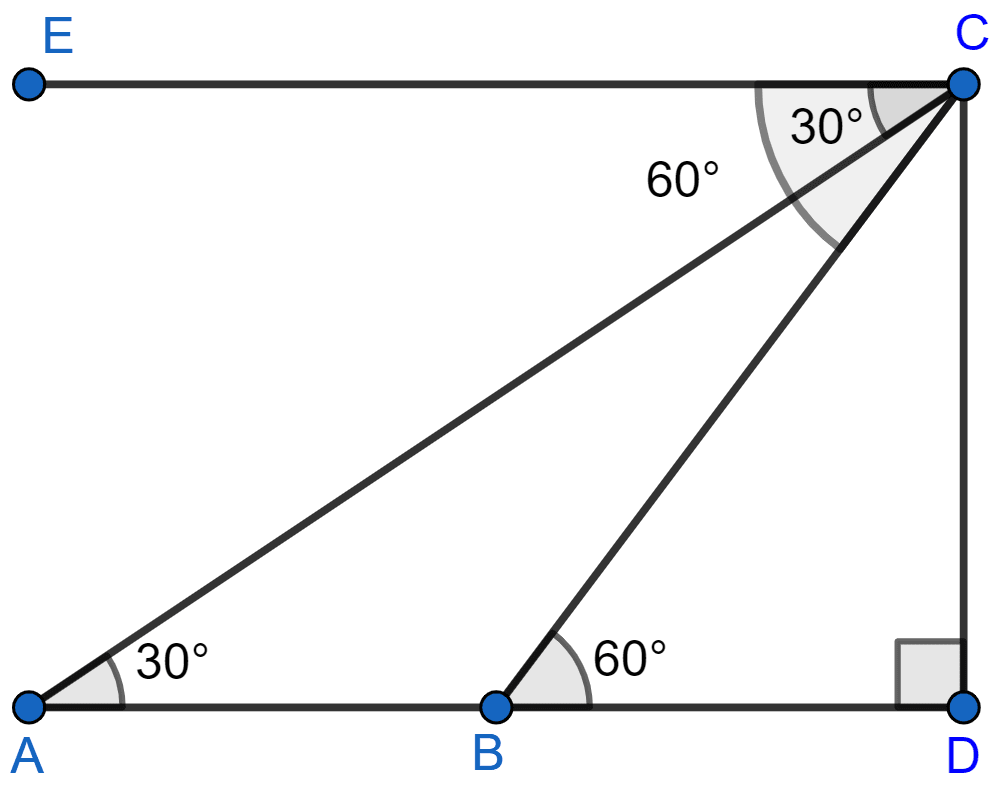Mathematics
A man on a cliff observes a boat, at an angle of depression 30°, which is sailing towards the shore to the point immediately beneath him. Three minutes later, the angle of depression of the boat is found to be 60°. Assuming that the boat sails at a uniform speed, determine :
(i) how much more time it will take to reach the shore ?
(ii) the speed of the boat in metre per second, if the height of the cliff is 500 m.
Heights & Distances
32 Likes
Answer
Let CD be the cliff and A be the position of the ship when angle of elevation is 30° and B be the position when angle of elevation is 60°.

(i) From figure,
Dividing equation (1) by (2), we get :
Boat reaches from point A to B in 3 minutes.
Thus, boat covers distance AB in 3 minutes or it covers distance
⇒ 2 BD in 3 minutes
⇒ BD in = 1.5 minutes.
Hence, it will takes 1.5 minutes more to reach the shore.
(ii) In △ADC,
In △BDC,
From figure,
Let speed of boat be a meter/second so in 3 minutes boat will travel :
Distance (AB) = Speed × Time
AB = a × 3 × 60
AB = 180a meters ………(2)
From (1) and (2) we get,
Hence, speed of boat = 3.21 m/s.
Answered By
13 Likes
Related Questions
The angle of elevation of the top of a tower is observed to be 60°. At a point, 30 m vertically above the first point of observation, the elevation is found to be 45°. Find:
(i) the height of the tower,
(ii) its horizontal distance from the points of observation.
From the top of a cliff, 60 meters high, the angles of depression of the top and bottom of a tower are observed to be 30° and 60°. Find the height of the tower.
A man in a boat rowing away from a lighthouse 150 m high, takes 2 minutes to change the angle of elevation of the top of the lighthouse from 60° to 45°. Find the speed of the boat.
A person standing on the bank of a river observes that the angle of elevation of the top of a tree standing on the opposite bank is 60°. When he moves 40 m away from the bank, he finds the angle of elevation to be 30°. Find :
(i) the height of the tree, correct to 2 decimal places.
(ii) the width of the river.